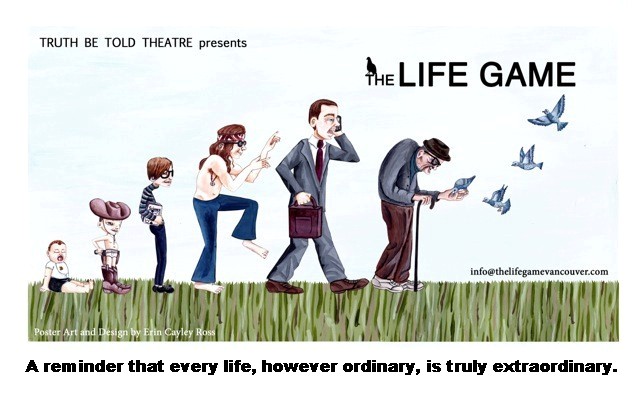PANTS ON FIRE!
The Format

A FEW WORDS ABOUT THE FORMAT
Before we get into HOW TO PLAY PANTS ON FIRE, here’s the story of how one format inspired two others and PANTS ON FIRE was born.
If you aren’t interested in this exciting and adrenaline pumping story, skip down to INSTRUCTIONS on playing the PANTS ON FIRE format. But, KNOW THIS! There is a curse if you fail to read this introduction.
No there isn’t.
That would be just wrong!.
And a little stupid.
And I can’t figure out how to do it. BUT… the history of things is good to know and it might give you some insight on how a format evolves.
A FAILURE in one format LEADS TO the DISCOVERY of another!
15 people from all over the world travelled to Calgary, Canada to learn and play Keith Johnstone’s, LIFE GAME format. Keith protected this format more than any of his other ones. The LIFE GAME focuses in depth on the stories from an audience member’s life. It is unlike any other impro format in the world.
Keith allowed few groups performance rights to the Life Game unless they had specific training in the unique directing, interviewing and performance aspects of the show. He knew that groups would be tempted to weaken the basic principles of the idea (as happened with his THEATRESPORTS where misguided improvisers remove elements of RISK and damaged that great format, relegating it to a gutless copy of the original in some locations.).
Considering that LIFE GAME deals with an audience member’s most important memories, he was right to be protective, if only to shield the audience from improvisers who were looking more for laughs than for the opportunity to show the audience members a unique reflection of their life.

Truth Be Told Theatre – Life Game
When our group finished the first performance of two scheduled performances, Keith told the group to go back to the studio and work on the techniques before performing it again. The improvisers who flew in from the far reaches of the planet felt their heart’s drop. There wouldn’t be a second show.
BUT – the second audience had already bought tickets for the next night’s performance.
I wanted the group to be able to practice the skills of Keith’s Life Game but I also wanted to honour Keith’s wishes for us not to perform his format if he thought we were not ready as a group.
In that moment, I remembered years earlier when we were with Keith developing the Life Game he introduced us to an OPPOSITE but related game called, HOW IT WASN’T.
Instead of interviewing guests about their true stories, we were given permission to lie about everything. Basically, the person being interviewed was told to make up all of their answers. It was a great release to lie lie lie, after a long day rehearsing improvisation based on true stories.
Remembering HOW IT WASN’T, I proposed a new format to the group where THREE PEOPLE would be interviewed through the show. Two of the people would tell the truth. One person would lie. As we did scenes based on the stories, the audience was tasked with figuring out who was the truth teller and who was lying.
Andrew Hefler (from Hungary) was participating in the class and suggested the title THE SHELL GAME, based on the swindler’s game where a street hustler would use sleight of hand to part participants from their money as they tried to guess which of three cups he had placed a little ball under.
Performers aim to playfully deceive the audience with “Universal Stories” – the stories that we have all experienced and feel like a part of our own life. The great thing with The Shell Game is that the truth tellers dig deep to tell stories that the audience might consider false while the Liars try not to go too weird (obviously lying). It’s deep and fun and rides on an exciting edge of improvisation and human behaviour..
The format was a success and has been performed around the world.

But the story doesn’t end there and the format evolves yet again…
PANTS ON FIRE
Improviser, Lindsay Mullen, contacted me recently and said, “Shawn! I’m coming to town. LET’S DO A SHOW!!!” I agreed, and when I asked her what the show was, she told me that she wanted to do something a little deeper than what she had been doing lately. But she also wanted to have some fun and not be too serious…
Then she asked, “Do you have a format?”
I thought SHELL GAME might be useful but the problem was that it needs at least 5 or 6 people to be effective. We were only 3.
Spontaneously, PANTS ON FIRE emerged (the title comes from the children’s school yard rhyme – LIAR LIAR – PANTS ON FIRE!!!)

PANTS ON FIRE would be an evening of improvisation based on believable lies and unbelievable true stories. These Universal stories connect the audience and performers through similar experiences around recognizable themes while challenging them to discover the liar in our group. When successful, the audience could try their luck and skill to tell stories to deceive us – possibly winning a prize.
Based on the SHELL GAME, This is how it goes:
FORMAT: PANTS ON FIRE
ORIGIN: Shawn (Read the intro above.)
BENEFITS:
- Played by a small cast
- Challenges the audience to play with the cast (trying to catch them in their lies).
- Trains performers to use truth to create entertaining scenes
- Trains performers to create relevance when they improvise stories that aren’t true.
- A show, a game, a psychological challenge!
# PEOPLE: 3 or 4
GOAL: Perform scenes where one person in the group tries to deceive the audience with a made-up story without getting caught. Lie believably. Tell unbelievable truths. Improvise scenes that extend stories that have been described in interviews. Engage the audience with strong stories and a psychological challenge.
PREPARATION

- COINS/BALLS/CARDS or some other marker with the word TRUE on two of them and LIE on one. In our show, we used CARDS with the word LIE in bright red on one and TRUE in blue on the other two. These should be big enough that the audience can easily tell which one they are looking at when you hold them up.
- A bag or container of some sort that will hold the markers and ensure a random and discrete choice when the performer chooses the marker.
- A cozy corner for “the interviews” have a sofa, drinks, snacks. This should feel like a living room party that the audience is part of. Have enough space that all performers AND at least one guest could sit comfortably.
- PRIZES for audience winners. (Tickets to upcoming shows. Chocolates. Bottle of wine or beer)
- Each of you should be prepared to initiate 2 or 3 topics of discussion. (Vacations, Love, Work, Revenge, Birth, Death, etc)
PROCEDURE:
INTRODUCTION
PANTS ON FIRE begins with the three performers on stage welcoming the audience and introducing the show.
” Tonight we offer you an evening of improvised scenes based on stories from all areas of life. But, not all of us will tell the truth. Are you easily deceived? Are you able to catch the liar?
“In each round of three scenes, two stories will be TRUE and one of us will LIE. After the scenes are performed in each round, you will vote for who’s telling the truth and who’s A LIAR LIAR.
If you get it right, you might win a prize. Get it wrong and you suffer the shame of deception in our little game.
PRACTICE VOTE
Show the audience the “TRUTH or LIE” markers that will be chosen before each discussion and then:
“Let’s have a practice vote”
Performers each remove a “TRUTH or LIE” marker from the bag without revealing it to the audience. We ask a theme from the audience and express a truth or lie – depending on what our marker indicates.
One by one, step forward for the vote – TRUTH or LIE.
The audience yells “TRUTH” if they think you are telling the truth and LIAR if they think you lied. (an alternate voting option is to have the audience applaud if they think you are the LIAR. Having them yell however, is a cathartic and fun reality in a group.)
Reveal the markers one at a time to the audience.
NOTE: This practice vote is the only %100 verbal time in the show where no scene is performed. It’s just an example of the vote. SO- KEEP YOUR TRUTH OR LIE SHORT and get on with the game where you can perform scenes.
PRIZE ROUND
(You can introduce the way they win the prize when they have the chance to win – as opposed to introducing everything at the beginning of the show).
Tell the audience that whenever they catch the liar in each round, one audience member who got it right has a chance to win a prize.
The audience member will choose a TRUTH OR LIE marker. Performers will do a scene based on an interview with them. The audience will still vote whether they told a truth or lie but it’s the performers votes that matter in the prize round. Deceive the performers and the audience member gets a prize. (tickets to a future show?).
THE WARM UP
You might want to warm up the audience with some form of activity that connects them in some way to the format.
A great connecting warm up starts with everyone in the audience standing. Performers take turn saying small things that are true for them. If it’s true for the audience member, they sit down. (“I rode a horse” – anyone who has ever ridden a horse will sit). It’s a nice way to connect especially if you are willing to go deeper than saying your favourite colour or season.)
You will narrow it down to one or two people. Ask them about their lives and you might stumble on a theme that interests you. This could be the topic of your first discussion.
LETS BEGIN –
THE DISCUSSION
Performers sit in the cozy area. This is the living room of the party. Keith Johnstone wanted the audience to feel they are at a party in our living room.
A Theme is chosen (Suggested by the warm up, or asked before the discussion, or initiated by one of the performers, or chosen randomly from a selection of themes.)
The discussion should be genuine – not a performance. Connected and engaged. If you are inspired, you can lead the chat with a story or ask questions of the others. You can engage and chat with the audience and see if they want to ask anything.
IF YOUR MARKER SAID TO LIE, THEN YOUR STORY IS NOT A TRUE STORY OF YOUR LIFE. IF YOUR MARKER SAYS TRUE, THE STORY YOU TELL IS A TRUTH FROM YOUR LIFE.
PERFORMING SCENES
When someone has become the focus of the discussion and is telling the anecdote based on the topic, the other performers draw out relevant details of the story, and eventually one of the other performers sets up a scene based on the story. This discussion period should not go on too long. (Keith Johnstone would sometimes have a timer on stage to encourage the performers to leave the talking and move into the scene performance. Consider this if things are getting too verbal)
Setting up scenes based on storytelling has it’s own set of hurdles. We don’t want to do scenes that basically play out the story tellers rendition. Is there a consequence of the story you can play out. Are there unanswered questions you could explore in the scene. Instead of the first Kiss that was described, can you show the scene upstairs of the parents listening to that first kiss going on in the other room?)
Anyone can set up the scenes. All performers can participate. The scenes are INSPIRED by the stories we’ve heard. They don’t have to be EXACTLY what we heard.
Games can sometimes be included for variation. If the interview involves a ghost story, a director might want to set up a scene where the performers tell the Ghost’s story one word at a time.
REPEAT for each performer:
Chat, Interview, Scene set up.
Each round consists of all participating performers being interviewed, and having a scene performed based on their story.
THE VOTE
Performers bring the hidden “Truth/Liar” marker they chose at the beginning of the round to center stage. Remind the audience with a couple words what your “TRUTH” is. And remind them that they will be voting on the spoken truth and not the scene content.
One person at a time steps forward. The audience yells “TRUTH!” or “LIAR!”
Performers make it clear who the audience has chosen as the LIAR based on audience votes.
Now it’s time to reveal the markers. It’s best if someone with a TRUTH marker reveals their marker first. This can set up tension as it eliminates audience members who got it wrong. I’m sure you can figure out a clever way of doing this elegantly. If you can’t, drop me a note and I will give you a tip or two. (Better yet, let’s have a workshop with your group)
If the audience chose correctly, move on to a PRIZE ROUND. If the audience loses, move onto a second round – choosing a theme, conducting interviews and performing scenes.
AUDIENCE PRIZE ROUND
Explain to the audience that they have won the round against the liar but to win the prize they still have one more task.
From those who chose the liar in that round, ask who would be willing to tell a story after taking a TRUTH OR LIE marker.
Invite them down on stage. Congratulate them on their victory and tell them that the prize is theirs if they can fool the performers.
Offer them a drink. Get them to introduce themselves. Have them choose a marker. Interview them on any topic that THEY FEEL COMFORTABLE TALKING ABOUT. Have a nice little conversation. Get them to tell a story from their life about that topic.
Do a scene.
Have the audience vote TRUTH or LIAR.
Now tell them that the ultimate verdict comes from the performers who now vote. Is the guest telling the truth or lying?
If the performers get it wrong, the guest wins the prize.
If the performers gets it right, the guest gets is thanked and they get to take their free drink and snack back to their seat. (Runner up prizes might also be rewarded. Lindsay Mullen suggested a consolation prize that the guest has the privilege of taking her out for dinner or driving me home after the show. No, these are not prizes you necessarily want to win.)
CONCLUSION
You might get through 3 or 4 rounds. in the show
Look for variety in the scenes. They shouldn’t be all the same length. If there has been a deep and poignant scene, it’s good to switch it to something light. Whatever you’ve been doing, do something different.
When you end the show, be gracious to the audience and thank them for their participation. Consider a short wrap up scene or one of the variations to end the evening (check below some some variations we’ve been exploring)
Something to consider: If you want to add another variation of “Competition”, you could frame the overall game around LIARS vs TRUTH TELLERS. Will the liars win more often than the truth-tellers? Rounds where the LIAR isn’t caught gives a point to the LIARS. Rounds where the LIAR is caught awards a point to the truth tellers. Can the audience beat the Liars or will they be deceived by the dark side?
In the PRIZE round where the performers predict if the audience member is lying, it can be kind to the audience not to have all the votes go against them. If the first two performers vote the same way – TRUTH or LIE – It might be kinder for the third person to pick the opposite. No reason to totally defeat the guest. In many cases however… you will discover that the audience is better than the performers and will deceive you.
TEACHING TIPS:
In this format (and in the Shell Game), performers fail to recognize the difficulty of strong interview techniques and directing skills. I’ve set up this format style with a number of groups. The groups that take the time to workshop these skills consistently have better performances than groups who “wing it”. We are improvisers but that doesn’t mean we have all the skills for all styles of impro. Exploration, rehearsal and practice should be part of your improvisation work.
Some performers say they can’t lie effectively. Remind them that they do it all the time as improvisers. They just don’t call it lying. Practice telling stories that COULD be real with clear details. These are the skills that make you better improvisers… and liars.
Good directors see the unanswered questions in story telling. They find inspired scene directions moving towards the questions in the stories that the audience is all wondering about.
Good directors understand LATENT IDEAS – the deeper truths that are implied in stories. If the storyteller is talking about an old house, with a grandfather clock ticking slowly in the main room, they understand that this could be a story of aging and a theme of time. They might see the image of the old house as a body and the clock ticking as the heart in the center of it. Play with understanding the meaning of ideas and how to use them to inspire the performance.
This is a young format. Try things with it and see what adds to the experience.
VARIATION:
HEAD TO HEAD – In this variation ONE performer is up against ONE audience member.
Both sit in the interview location and are interviewed based on one theme. One will lie. One will tell the truth. The other two performers set up one or two scenes based on one or both of the stories. The audience is voting for the truth and Liar. after the scene. THESE TWO PEOPLE TRY TO DECEIVE ALL OF US. If we vote wrong, the audience member gets a prize.
THE QUICKIE! – This variation cuts back on the talking for a quicker round: Instead of a discussion and story telling process, the performers have only one line truth or lie – no discussion, only scenes inspired by one simple statement. Vote as usual.
GETTING THEMES:
- Pull a theme from a bucket (prepared before the show)
- Ask the audience for the topic
- Chat with each other on stage and discover a theme.
- Spin a wheel of themes.
HAVE FUN, let me know what you discover and what variations you try.




0 Comments